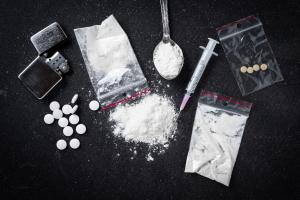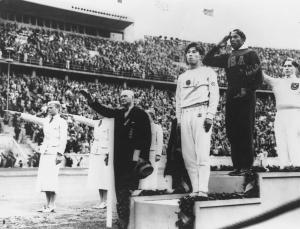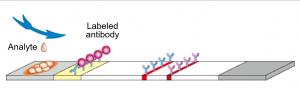Korea was colonized by Japan from 1910 to 1945. People of the ruined country were robbed of everything: land, food, work force, language, dignity, and spirit. But they kept up a struggle for independence. More than 2 million people continually yelled for Korean independence and waved the Korean flag. Some people grabbed guns and joined the armed resistance against Japanese colonial rulers, and others wrote poems and novels which gave hope of independence to the oppressed Korean people. These fighters for independence are remembered by most Koreans nowadays. Nearly every Korean knows their names and their great achievements.
But some might have no idea from hearing the name Kansong, Chun Hyung-pil. Kansong is his Ho, a second name mostly made by the name owner himself. It was considered rude for the Confucian cultural people to call others by their name, so they preferred to call others with their Ho. In this article, I will use his Ho, Kansong to follow the tradition. Kansong is a collector, who lived from 1906 to 1962. He is one of the fighters for independence, by protecting Korean cultural properties from being taken out of the country. In this section, we will check about Kansong and his collections, through my experience of visiting the Kansong ‘Dae-Han Collection’ which is currently on exhibition in Dongdaemun Design Plaza (DDP).
Kansong was born in 1906, Jongno 4-ga of Seoul. His family, who owned a plantation, took up a government position and was one of the richest families of Joseon, who owned a plantation. Unlike other rich people, Kansong did not use money for his own luxurious pleasure and lived a frugal life. At the age of 23, Kansong met Wichang, Oh Sae-chang who was one of the 33 Korean leaders and an authority on Chinese classics. Wichang was aware of the Japanese plot to destroy Korean culture and knew that systematically organizing our own spirit and culture would be the only way to protect our people. By having a deep interaction with this old master, young Kansong was moved. He understood the will of Wei Chang and the concept of the cultural independence movement. It was the beginning of his great collection, and he devoted his whole fortune to collecting the Korean treasures.
The collection which is now exhibited in DDP was originally housed in Kansong Art Museum, located in Seongbuk. The prior name of Kansong Art Museum was ‘Bohwagak,’ meaning ‘the house that protects splendid treasures.’ Kansong Art Museum is the first private art museum established by Kansong himself in 1938. After his death, his offspring manage the museum. Lots of special collections were exhibited here. As more and more people came to see the great collection of Kansong, Kansong Art Museum is now in the process of repair to accommodate more people.
There are many great treasures in the exhibition, but I will introduce you to 3 collections that I picked from them. First to see is Haeakjeonsincheop, the book illustration of Mt. Geumgang. It was drawn by Gyeomje Jeong Seon (1676 - 1759), who was the master of the ‘True View Landscape Painting.’ We may not have been able to see this if it hadn't been for Jang Hyung-soo, the collector. He found this book illustration at the house of a pro-Japanese collaborator, while going to the bathroom. The servant was about to throw this masterpiece into the fireplace as kindling, not knowing the exact value. Jang Hyung-soo stopped the servant, bought the book and sold it to Kansong who knew the true value of it. How close!
The second piece is the Celadon* Prunus* Vase with Inlaid Cloud and Crane Design. It is in the distinctive Goryeo shape with an “S” curved body, and lots of clouds and cranes that decorate the vase, meaning the desire of longevity. This vase has been recognized for its beauty and value, and designated as National Treasure No. 68. Kansong bought it from a Japanese art dealer Maeda Sayichiro, paying more than 20,000 won which was worth 20 decent houses in Seoul at that time. Can you feel the grace of the pale green color and the fine pattern of the vase? I recommend you to take a look for yourself.
Last to see is the Celadon Water Dropper* in the Shape of a Mother Monkey with Baby. Monkeys were thought to be auspicious* animals and raised as pets in Goryeo high society. This water dropper has been appreciated for its delicate shape and originality and designated as National Treasure No. 270. Plus, this water dropper is one of the collections of John Gadsby, the English collector who lived in Japan. He was fascinated with Goryeo celadons and started to collect them. Kansong steadily paid attention to this collector at the right time. Gadsby knew that there would be war coming to Japan and decided to sell his collections. Kansong did not miss this chance and got this water dropper back to Korea with 19 other treasures.
There are much more splendid treasures and various information of Kansong and his great deeds in the exhibition. ‘Dae-Han Collection’ will be held until March 31st, and it is the last exhibition that is held in DDP. So do not miss it! The exhibition entrance fee is 10,000 won and the operating hours are from 10am to 7pm. (10am to 9pm on Friday and Saturday) Plus it is closed on Mondays. If you want more information, call 02-2153-0339~41 or go to www.ddp.or.kr / www.kansong.org .
Kansong saved our precious treasures, and it is our duty to know his effort and preserve the collections that he left to us. After you read this article, and someone asks you the name a Korean fighter for independence, please remember the name of Kansong, the Savior of Korean Spirit.
Celadon* : a type of porcelain having a greyish-green glaze
Prunus* : a type of traditional decoration on porcelain that depicts the leaves and branches of the Chinese plum
Water dropper* : a small cup for adding water to an ink stone
auspicious* : suggesting a positive and successful future
Lee Jumi can9803@naver.com
<저작권자 © 홍익대영자신문사, 무단 전재 및 재배포 금지>





